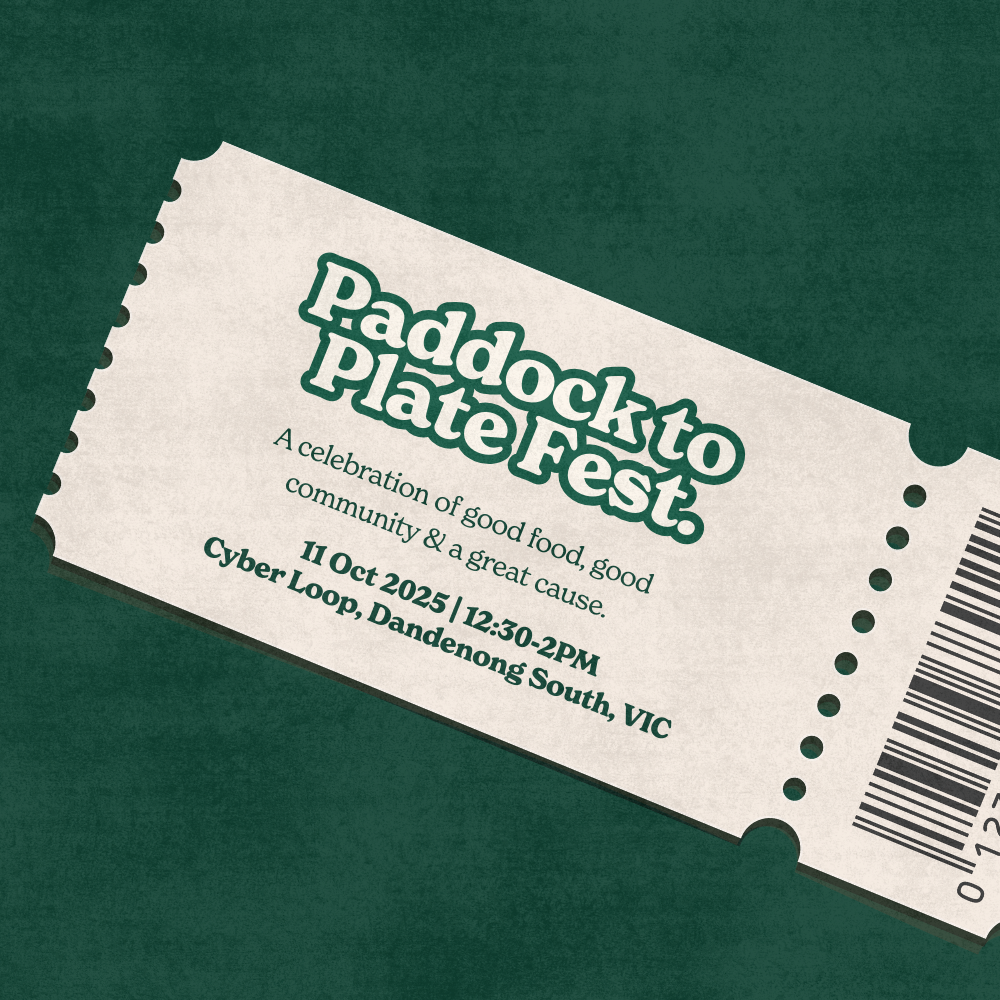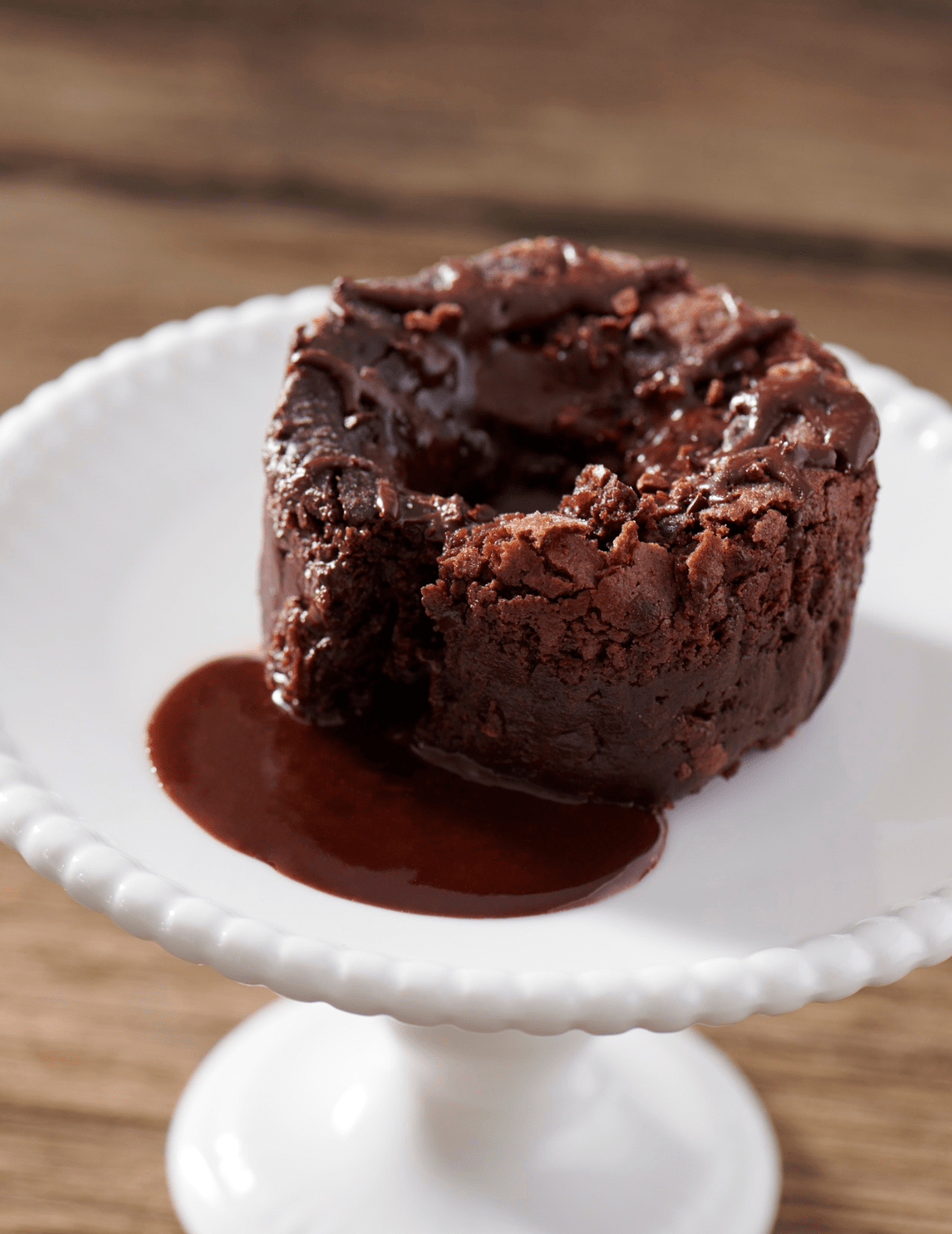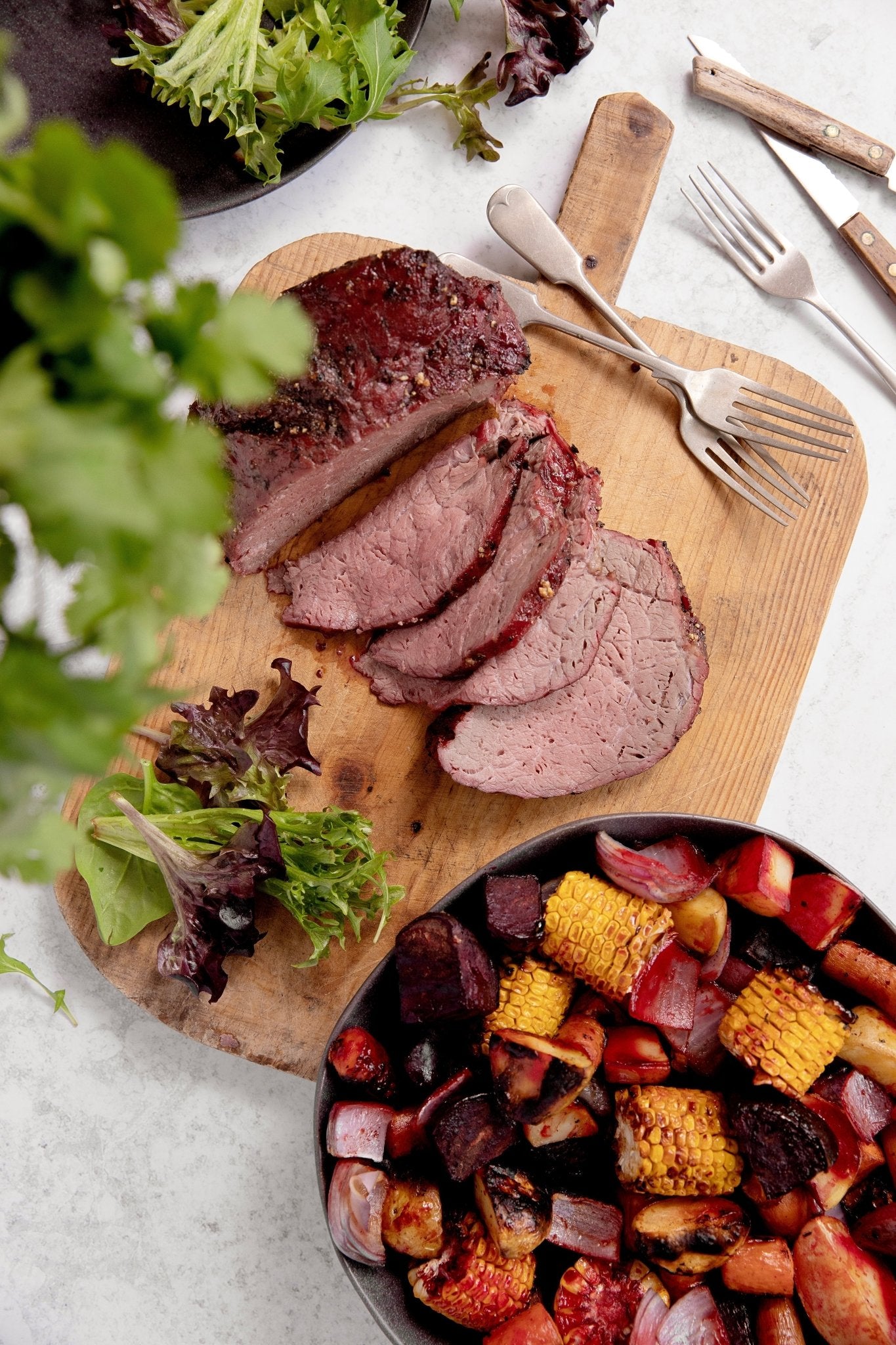I think we’d be hard-pressed to find someone in this country who hasn’t had a lamb loin chop. The quintessential lamb cut that generations of Australians were brought up on. Instead of breaking the loin down into the beloved lamb chops, we’re cooking the whole loin, still on the bone, after a little home butchery if you’re up for it. We’ll produce two dishes from the lamb loin as opposed to just one.
The Lamb Loin’s Characteristics & Flavour Profile
The loin itself consists of two main muscles: the backstrap (think striploin in beef) on the outer side of the vertebrae and the tenderloin (think eye fillet in beef) on the underside. The loin section we’re using sits between the rack and the chump (rump) of the lamb carcase, which is generally removed and cooked boneless or can be cut on the bone into chump chops.
These two muscles are generally less-used muscles and are therefore extremely tender. The tenderloin, in particular, has very little flavour or complexity purely because of the lack of movement and zero load-bearing it undertakes in the live animal. The backstrap has more sweetness and complexity, coupled with tenderness, making it one of the most desired of all lamb cuts as it is a muscle that is used more in the live animal.
Sourcing the Lamb Loin
Finding the whole loin at a butcher shop is generally a fairly easy adventure. As whole beef carcase butchery sadly declines in many butcher shops, lamb and pork, thankfully, are still a daily part of your local butcher’s work. Generally, your butcher will be purchasing whole lambs if they are achieving carcase balance. If not, most processors will sell just the saddles to butcher shops, allowing them to produce loins and racks only.
Preparing the Lamb Loin
Preparing the loin for the EGG is quite simple. Ask the butcher to remove the flap for you so all you’re left with is the backstrap and the tenderloin on the bone. The butcher may charge slightly more per kilogram when they remove the flaps, but this is to be expected. If you happen to make your own sausages, keep the flaps to be ground into sausages, kefta, or burgers.
You’ll need to remove the tenderloins from the loin. As these are small and extremely lean, they’ll be overcooked well before the backstraps have even started to cook. To remove these, lay the loin fat side down with the spine running north-south and on the right (if you’re right-handed like me). Place the tip of a paring knife on the left-hand side of the spine at the top and gently cut a shallow mark, keeping the blade against the spine. Repeat until the tenderloin is no longer connected to the spine on the right-hand side. It can then literally be peeled away from the wing bones by starting at the bottom and twisting your knife so it is flat against the wing bones, which are attached to the spine and pointing to the left.
For best results, I would cook the tenderloin that day and leave the bone-in backstrap in your fridge for the next day, uncovered. This will allow the fat cap to dry out a little more, resulting in a crispy fat coverage that will enhance the finished dish.
Roast Loin, Lamb Fat Sautéed Greens and Jus & Grilled Tenderloin, Chickpeas, Roast Onions, Almonds and Jus Recipe
EGG Set Up
|
Set Up |
Recommended Charcoal |
EGG Target Temperature |
Cooking Time |
|---|---|---|---|
|
Indirect (ConvEGGtor) |
Oak & Hickory Premium Lump Charcoal |
180°C |
Until internal temperature reaches 52°C |
|
Direct |
Oak & Hickory Premium Lump Charcoal |
High |
Tenderloin: a few minutes per side |
EquipmentBig Green Egg ConvEGGtor (optional, for bone-in loin) Grill grates Small pan Knife Tongs Cutting board Measuring spoons Food processor or mortar and pestle Optional: Cast iron pot |
Ingredients1 whole lamb loin on the bone, trimmed of flaps Good-quality tinned chickpeas Seasonal greens (broccolini, asparagus, etc.) 1 brown onion Flat-leaf parsley 1 lemon Extra virgin olive oil Skin-on roasted almonds Roast chicken sauce (jus) Sea salt Freshly ground black pepper |
|
|
|
Top Tips:
Use Trimmings Wisely: When you start doing your own butchery at home, you’ll end up with trimmings. Think like a butcher and a chef: how can these add value to your cooking? Consider grinding trimmings for burgers, adding them to stocks for a richer finishing sauce, incorporating them into pies or ragus, or rendering them for tallow or lard. There’s almost always a way to use trimmings in the kitchen.
Question the Bone-in Sweetness Myth: Is meat cooked on the bone really sweeter? I believe this is a misconception. Meat cooked on the bone tastes different, but not necessarily sweeter. The bone shields one side of the meat from heat, resulting in a different level of doneness near the bone compared to the side exposed to the heat source. This creates unique flavour and texture differences.
Keep Stock on Hand: Making stock is easy and can become a rewarding habit. Stocks, sauces, and jus tie a dish together and deserve as much attention as the main ingredient. Make large batches of stock, strain, reduce to a glaze, and freeze in ice cube trays. When you need stock or sauce, simply rehydrate a cube, and you’re ready to go!
Roast Chicken Sauce: My all-time go-to sauce. Roast your favourite chicken on the EGG and reserve the bones, wingtips, and any other part that isn’t consumed, even the stuffing if you have it. Place the bones (in as small pieces as possible) in a cast iron pot with enough water to cover by half again. Add one brown onion, skin on (skin adds to the colour), cut in half, six garlic cloves crushed but whole, black peppercorns, and one whole carrot. Bring to the boil, then cook slowly with a lid on and the dome closed for an hour or so. Keep an eye on it and top up with hot water if required. Strain well and reduce to a glaze as above if this is destined for the freezer.
This recipe is part of our Uncommon Cut Series blog, showcasing unique and delicious ways to cook with lesser-known cuts, brought to you by culinary expert Darren O'Rourke. Want to learn more about Darren and his passion for cooking? Get to know him here.






